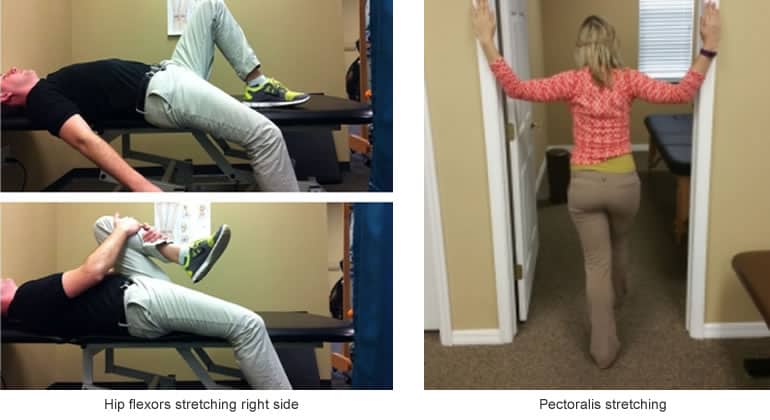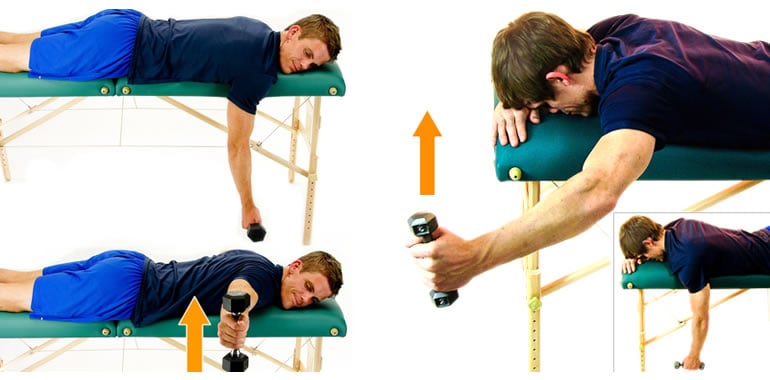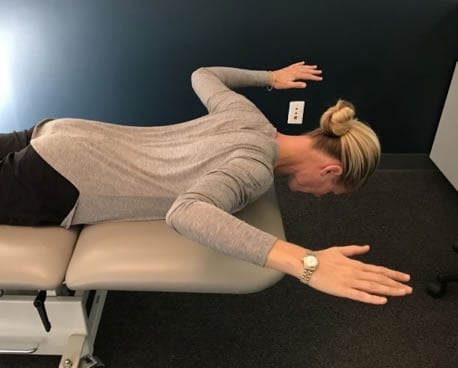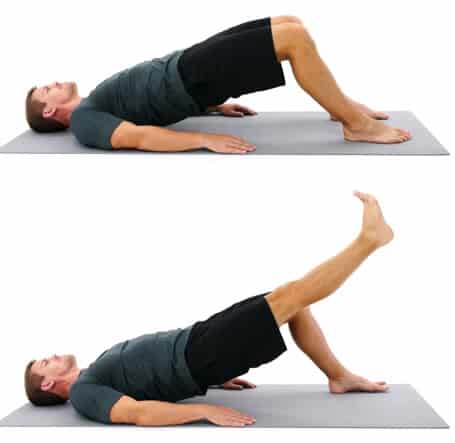One of the questions I've been asked most frequently as a physical therapist is: "what exercises do I need to do?". There are so many different kinds of exercises, from stretching, cardio, core, resistance, and balance, all the way through to breathing and everything in between. With different names such as Yoga, Pilates, Crossfit, and Beach Body, it can definitely be confusing as to what exercises are right for you, let alone where to start. It can become so discouraging that you might think doing practically any form of exercise, no matter how ineffective, is better than doing nothing at all.
Alternatively, it may not even be about understanding which exercise to do… it’s possible that you’ve been injured and just don’t know how to get back on the horse, so to speak. As a medical professional, it is heartbreaking when I see people give up on training or sports due to the discouragement of an injury. When this happens, they lose all the benefits of exercise.
In lieu of this – whether you just don’t know where to start, or whether an injury has thrown you off – it is essential to know which activities are fitting for your body and particular lifestyle. There is no such thing as the "one-fit-for-all" exercise; nor is there a single exercise that is better than the rest. Essentially, we all need five different kinds of exercises: stretching, balance, core, strengthening, and cardio, albeit in different variations. The two great questions would be these: "how can I maximize the benefit of doing exercise, and, what exercises do I need to add and focus more on?”. I’d like to offer a brief introduction of all five exercises, so that answering these questions is less of a challenge. In other words, I’ll help you find out which exercises you are missing out on and those you need to do more of.
1. Flexibility is Key- Stretching
Remember, people get stiff and old, not old and stiff. Do not accept that stiffness is a natural consequence of aging. The first thing we need to recognize is the fact that people's lifestyles have changed in modern society. We all know that most people work sitting at a desk, driving a car in a seated position, eat dinner sitting down, and sleep in pedal posture. All of these postures limit mobility if done for prolonged periods of time. One activity is particularly distressing in this regard: playing games using a smartphone. This behavior is not just limited to younger children anymore. In fact, according to an AARP survey, older people actually play mobile games more often than youngsters! All this results in stiffness of the neck, back, and legs. If you’re a ‘sitter’ at heart, you may recognize that you are slower than others when you walk, despite the fact that you may walk harder. That is a sign of stiffness, especially in your hip flexors. Starting an exercise routine that incorporates stretching is very important for preventing not only the aforementioned stiffness, but for the prevention of injury, too! So, in light if this knowledge, here are a few important muscles you need to start stretching: chest muscles (pectoralis), hip flexors, quads, upper trapezius, and calves.

2. Balance Matters
 Balancing is a combined effort of your sensory, equilibrium, brain, and motor systems. The neural system exists all around your body, thereby enabling it to sense where your body parts are located and allowing them to move according to constantly changing environments. The “equilibrium” is the sensory center in your inner ear, detecting your speed and vertical orientation. In a dialogue with the equilibrium, the brain collects data and analyzes it, after which it then fires your motor system accordingly. All this drives your ability to balance. Right now you might be thinking: “I’m not old enough to worry about my balance.”. The truth is, though, that I’ve witnessed even professional players experiencing balancing issues, and, ultimately, it affects their sporting abilities. To train our sensory system, the brain, and equilibrium, we need to train the inner ear first, as that controls balance. So, how can we educate the sensory system? I know all this may sound entirely new to you, so let’s start with the basics. First, slow down your walking speed and feel – with your whole body – where you are placing your weight: is it heel to toe, and is the surface you’re stepping on hard or soft, or perhaps even or uneven? Next, feel the weight shift from one leg to the other… right and left. Feel your foot, knee, and hip. Make sure you keep an upright posture. Videotape your walk and see your posture: it might surprise you. You may also hear the sound of your steps. If you hear big pounding noises, then your walking is too hard; remember, all the joints that bear your weight suffer under that constant pounding movement. Thus, walk softly: imagine someone is pulling your hair from the sky above you, thereby enabling you to stand tall and upright. The next step in the process is to stand in front of a countertop or a piece of heavy furniture and try lifting one leg up, bending it at the knee. Make it trickier by closing one eye, and then the other, in the midst of balancing – hold on to the furniture if you lose your balance. How long can you balance for? Was there a big difference when you closed your eyes? Count and repeat the action; see whether you can improve on your time.
Balancing is a combined effort of your sensory, equilibrium, brain, and motor systems. The neural system exists all around your body, thereby enabling it to sense where your body parts are located and allowing them to move according to constantly changing environments. The “equilibrium” is the sensory center in your inner ear, detecting your speed and vertical orientation. In a dialogue with the equilibrium, the brain collects data and analyzes it, after which it then fires your motor system accordingly. All this drives your ability to balance. Right now you might be thinking: “I’m not old enough to worry about my balance.”. The truth is, though, that I’ve witnessed even professional players experiencing balancing issues, and, ultimately, it affects their sporting abilities. To train our sensory system, the brain, and equilibrium, we need to train the inner ear first, as that controls balance. So, how can we educate the sensory system? I know all this may sound entirely new to you, so let’s start with the basics. First, slow down your walking speed and feel – with your whole body – where you are placing your weight: is it heel to toe, and is the surface you’re stepping on hard or soft, or perhaps even or uneven? Next, feel the weight shift from one leg to the other… right and left. Feel your foot, knee, and hip. Make sure you keep an upright posture. Videotape your walk and see your posture: it might surprise you. You may also hear the sound of your steps. If you hear big pounding noises, then your walking is too hard; remember, all the joints that bear your weight suffer under that constant pounding movement. Thus, walk softly: imagine someone is pulling your hair from the sky above you, thereby enabling you to stand tall and upright. The next step in the process is to stand in front of a countertop or a piece of heavy furniture and try lifting one leg up, bending it at the knee. Make it trickier by closing one eye, and then the other, in the midst of balancing – hold on to the furniture if you lose your balance. How long can you balance for? Was there a big difference when you closed your eyes? Count and repeat the action; see whether you can improve on your time.
3. Core Strength
It’s likely that you’ve probably heard of core strength, but what is it exactly, and why is so important? Well, it forms the center and entire base of your body. I’ve experienced that simply strengthening the core increases someone's balance tremendously. Do the one-leg standing balance exercise – described in exercise 2 – and, in the midst of it, tighten your abdomen slightly. You might see improvement immediately. Not only does this alleviate pain, but it increases exercise performance and prevents injury, controls bowel and bladder accordingly, and plays critical roles in sexual function as well. If you want to further improve your core strength, a greater focus on your core muscles is needed. Core muscles are located in your abdomen and at the bottom of your pelvic floor. They stabilize your pelvis and your back. To work on them, specifically, do this basic core exercise first: lay flat with both feet on the floor and bend your knees 90 degrees. Find your pelvic bones on both sides using both your hands, then move your leg as though you are walking. At this point, you can feel how much your pelvis moves by noticing the rhythm in your fingers; this all happens without actually engaging your core. To engage your core actively, follow these cues:
- 1Place a pillow between knees and squeeze gently.
- 2Brace/narrow your abdomen: imagine sinking your belly button down to the floor.
- 3At the same time, engage your pelvic floor muscles by squeezing your anus muscle, pee muscle (image you are trying to slow down your pee), and vagina muscle (only for ladies, yes, you don’t have this if you are a guy).
- 4Then, straighten your knee by lifting one foot at a time – only 1 inch – while squeezing the core muscle, making sure your pelvic bones are not moving.
- 5Lastly, take a break for a few seconds then repeat phases 1-4.

Repeat this motion twice in sets of 10, and make sure you are breathing normally. If you aren’t, you are pushing yourself too hard. In order to progress from this exercise and challenge yourself a bit more, lift your leg higher while you minimize pelvic motion. Also you add lift weights on the opposite side of the leg you are lifting you via the use of your arms. You can start with an easier pose by lying down, then moving to a sitting position in a chair, and then sitting on a therapy ball. This training will help you protect your back and increase power in your body through the use and strengthening of your core muscles.
4. Lifting Weights
We all know lifting weight is important, but most injuries happen during strengthening routines. Muscle grows when it is loaded up, and the heavier the load, the faster the muscle grows. For this reason, the wrong technique, overuse, and overloading are the main reasons people get injured. Here are a few things you can pay attention to in order to maximize efficiency and minimize the risk of injury: start with a light weight that you feel is easy to lift at least 20 times. Once you’ve stuck to this weight for a week, you can start increasing the load. Some muscle groups are usually overlooked and are thus weaker than others. These, therefore, need to be focused on more intensely:
Muscles between the shoulder blade and mid-back (lower Trapezius and serratus anterior): lie on your stomach in a bench or in the edge of a bed so your arm hang and lift up 3-5 LB weight from the floor into a sideways position with a straight elbow (T shape), elbow bent (W shape), then 45 degree forward (Y shape); then, slowly return down to the floor.

Deep neck flexors: tuck your chin in and, at the same time, look down to 15-20 degrees. Repeat this for 2 minutes.

The gluteus muscles rather than the quad muscles: these can be strengthened by alternate bridging exercises. (make sure your pelvis are leveled)

5. Aerobic Exercise
Lastly, endurance/aerobic exercises such as jogging, cycling, and swimming are essential. These types of activities demand more oxygen through boosting your breathing and are usually more effective at a lower intensity for a longer duration. It is, however, important to monitor your pace and intensity during these types of activities. Experts have actually unmasked the process whereby aerobic exercise should be analyzed in this way, naming it “the 10% rule”. This rule comes into play depending on your overall daily condition: if it’s good, push yourself 10% harder, if it’s bad, reduce the intensity and distance by 10%. In other words, pace yourself. Start at a lower intensity. Test your pace by applying a talk test; you can measure your endurance and intensity level by judging whether you can talk and sing without puffing at all. After approximately a week, you can increase your pace to a moderate intensity at which you can comfortably speak, but not sing. After 2-3 weeks of training, you can proceed to a vigorous intensity, meaning you can't say more than a few words without gasping for breath. You can then start increasing your intensity by pushing yourself for a few minutes during your run and then gradually increasing your overall pace over a longer period of time – think “10%”.
Here are a few more tips just for you:
To end this post off, and having outlined the five major exercise genres you should be looking into to stay healthy, I’d like to remind you that we have 11 organ-systems, all if which are positively affected by exercise. Even your skin looks better with exercise! By doing all five different exercise variations effectively, safely, and by by following the above tips, your health and fitness will increase dramatically.
If you have any questions, feel free to contact us whenever you need to. If you want to learn more about personalized exercises that are right for you, call us at 858-847-2025 or click the link below -“ A Free Consultation Session”: no fees and obligations, period. We’re here to help you find the best exercises, stretches, and training routine to ensure that you are pain-free, healthy, and living the life you are meant to: one full of health and happiness. We hope to chat to you soon!
- Stop treating people like dead - March 25, 2024
- Stop Asking Me ‘Where are you from?” - March 25, 2024
- You Need the Right Diagnosis, not the Right Technique - November 25, 2020





